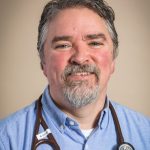Author’s Note: I presented much of this information in December, during National Handwashing Week. Given our current situation, it bears repeating!
Now, more than ever, it’s important to remember that the fastest, easiest thing you can do to protect your health is to wash your hands.
Washing your hands is fast: it takes just 20 seconds to do it right. The CDC suggests you time yourself by humming the “Happy Birthday” song twice while you wash. To wash your hands correctly, just follow these five steps:
- Wet your hands (warm or cold water, your choice).
- Lather your hands, front and back.
- Scrub with soap for at least 20 seconds. Don’t forget these often-missed areas: nail beds, wrists, between the fingers, and especially the back of the thumb.
- Rinse well under clean, running water.
- Dry your hands on a clean towel or air dry them.
This is an incredibly powerful and effective practice that can reap important health benefits for yourself and others.
The most common way that germs are spread is via your hands. Eighty percent of all infections are transmitted by the hands, including COVID-19 (which is also spread by sneezing or coughing near someone, so please also wear a face mask).
An infection spread by unclean hands can have a devastating impact on your family and your community. Germs from unwashed hands can be transferred to other objects, like door knobs, handrails, tabletops, or toys, and then transferred to another person’s hands. A typical desk has as many as 10 million bacteria –100 times the number usually found on the average kitchen table, and 400 times the average number of germs on a toilet seat.
Just how fast can a surface become contaminated? Really fast.
Researchers at the University of Arizona used a simulated stomach flu virus to contaminate commonly touched surfaces in an office building. After several hours, they sampled 60-100 surfaces capable of carrying the virus—things like door knobs, light switches, elevator push buttons, coffee pot handles, or sink handles–things that are unavoidable. They found that within two to four hours, between 40-60% of the surfaces sampled were contaminated.
It is especially important to wash your hands right now, to avoid COVID-19. According to the CDC, there is currently no vaccine to prevent COVID-19. The best way to prevent this illness is to avoid being exposed to the virus, which is thought to spread mainly from person-to-person, between people in close contact with one another (within about 6 feet) or through respiratory droplets produced when an infected person coughs or sneezes.
Handwashing is best, but in a pinch, you can use hand sanitizer. If soap and water are not readily available, use a hand sanitizer that contains at least 60% alcohol. Cover all surfaces of your hands and rub them together until they feel dry. Avoid touching your eyes, nose, and mouth with unwashed hands.
Alcohol-based hand sanitizers do not create antibiotic-resistant superbugs. They kills germs quickly and in a different way than antibiotics. It’s true that these hand sanitizers kill both bad germs that make you sick and good germs you need to keep you healthy, but the good germs are quickly replenished. (Please note: hand sanitizers are NOT effective against Clostridium difficile, a bacteria that causes severe diarrhea – you MUST wash your hands with soap and water after exposure to this bacteria.)
Using gloves is a good idea in certain circumstances (shopping, for example), but it is not a substitute for washing your hands. Be sure to clean your hands after removing your gloves, as dirty gloves can contaminate your hands.
The bottom line: handwashing is one of the best things you can do right now to avoid getting sick and to protect the health of your family and your community.
Be a superhero – wash your hands!
Bio: David McCormack, Family Nurse Practitioner, joined the staff of Grace Cottage Family Health in May 2018. McCormack earned his Associates from Vermont Technical College, his BSN from the University of Vermont, and his Master of Science at the Massachusetts College of Pharmacy and Health Sciences, with a Family Nurse Practitioner focus. He holds certifications in emergency nursing, advanced trauma nursing, and emergency pediatric nursing.

